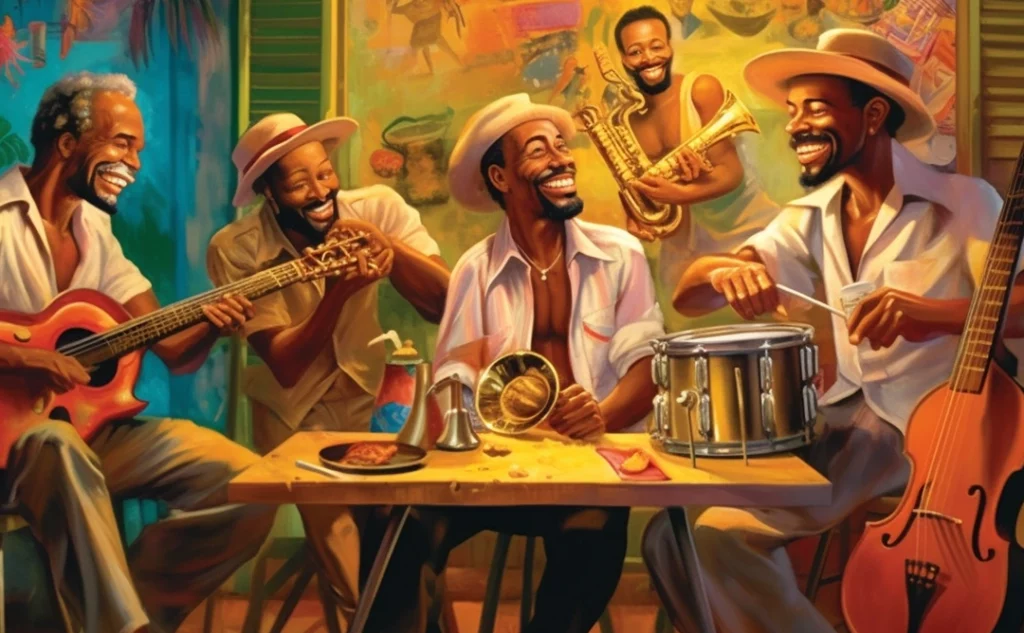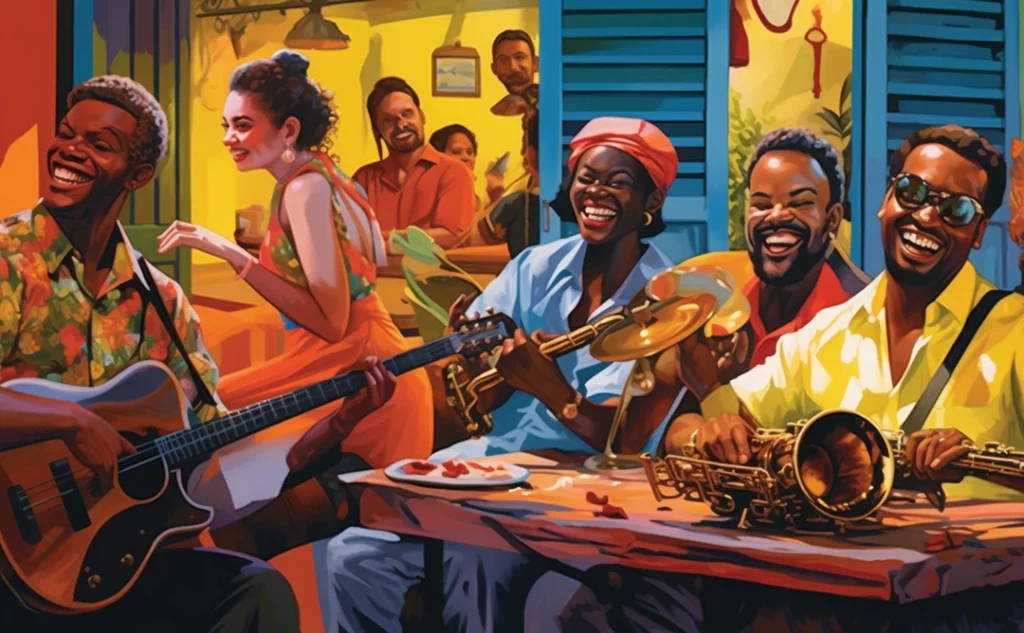The mix of cultures that characterizes the Brazilian people is also reflected in the origins of Brazilian music. The richness of rhythms and melodies that we hear today was born from the combination of European, indigenous and African influences, which gave rise to Brazilian music.
When they arrived here, the Portuguese colonizers already encountered indigenous customs full of musicality.
Our original peoples made music by dancing in circles and stamping their feet, singing and playing instruments like the maraca. It is a type of rattle formed by a dry, hollow gourd with small stones, lumps or seeds inside. This gourd is at the end of a stick, usually made of wood.
In turn, the indigenous catechesis inserted new elements into our rhythmic bowl, shaking up our musical training. Jesuit priests were the first music teachers in Brazil, starting in 1549.
The Portuguese bring the viola fashion
These priests used musical resources when teaching religion. The most famous Jesuit who was here, José de Anchieta, created several plays to convey his messages in a creative way and with music.
Until the 19th century, by the way, Portuguese influences were predominant in the composition of the structural lines of Brazilian music. After all, most of the literature and teachings in this field during the period came from Portugal.
An important milestone was the arrival of the Portuguese court in Rio de Janeiro in 1808. With Dom João Sexto, musicians arrived from Lisbon and Italy, establishing new references for Brazilian apprentices.
A viola fashion, a musical genre that became quite popular in the interior of Brazil, was the result of this Portuguese inspiration.
In the early days of Brazilian history, the viola was used by colonizers in their catechesis songs. Much later, the instrument was carried by drovers and bandeirantes on their trips to drive cattle or search for gold.
Africa sets the rhythm of our samba
No less important for defining the foundations of Brazilian music were African rhythms, which arrived here through black people who came as slaves. His music, in fact, became the soul of one of the musical styles most in tune with Brazilian culture: samba.

O samba It is a cultural expression considered Brazilian intangible heritage. In its most traditional format, it emerged in Brazil at the beginning of the 20th century in Afro-Brazilian communities in some neighborhoods in Rio de Janeiro.
This musical genre is heir to the round dances that enslaved black people performed, driven by a musical rhythm obtained through drumming. One of the most practiced dances was the lundu, brought by Africans from Angola.
In these dance circles, samba de roda appeared, a style that was a precursor to the traditional urban samba in Rio and was used to practice capoeira in Bahia in the mid-19th century.
Here, jazz becomes bossa
The very well-seasoned recipe of Brazilian music has also, more recently, gained ingredients from North American jazz – bossa nova is an example of this – and rock, which marked movements such as Tropicália in the 1960s.

All the diversity of the origins of our music is fully in tune with the very diverse character of the country's population.
This year, iFood, a company with Brazilian roots, sponsors, for the first time, one of the most traditional national music awards, the Brazilian Music Awardifrog.
The ceremony will be held at the Theatro Municipal do Rio de Janeiro, on May 31st. The night's honoree will be the singer and multi-instrumentalist Alcione, one of the artists who has won the award the most.


